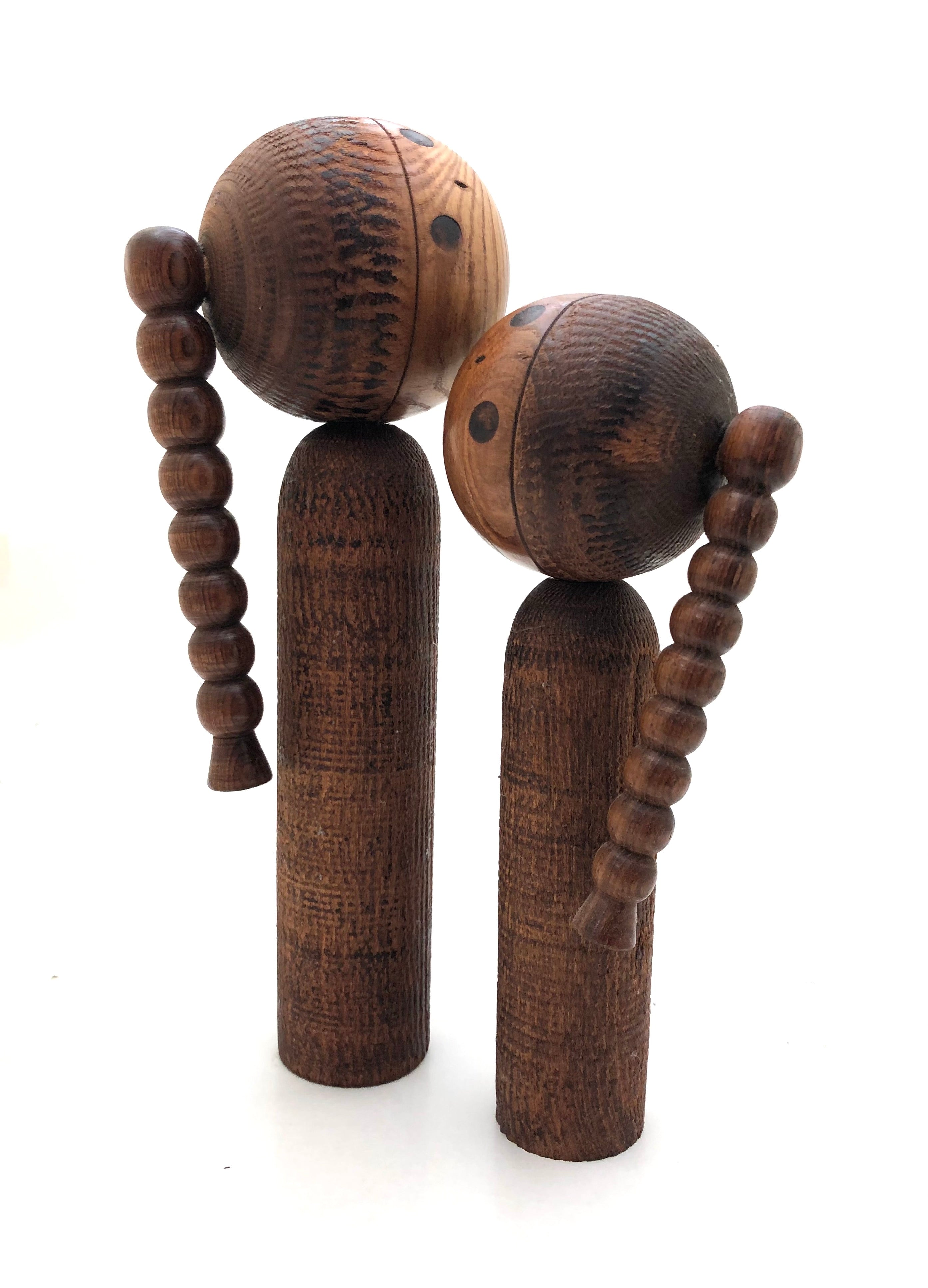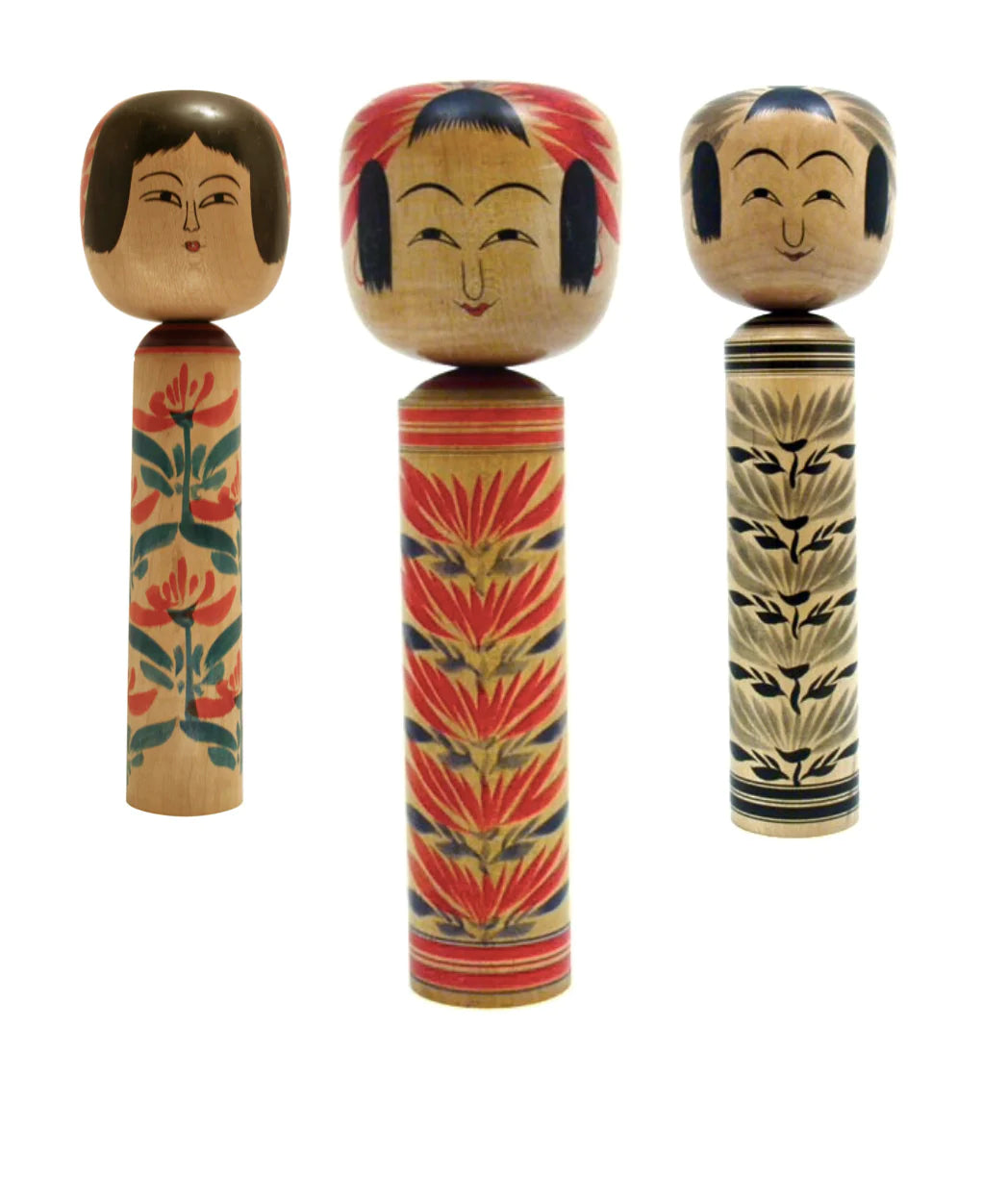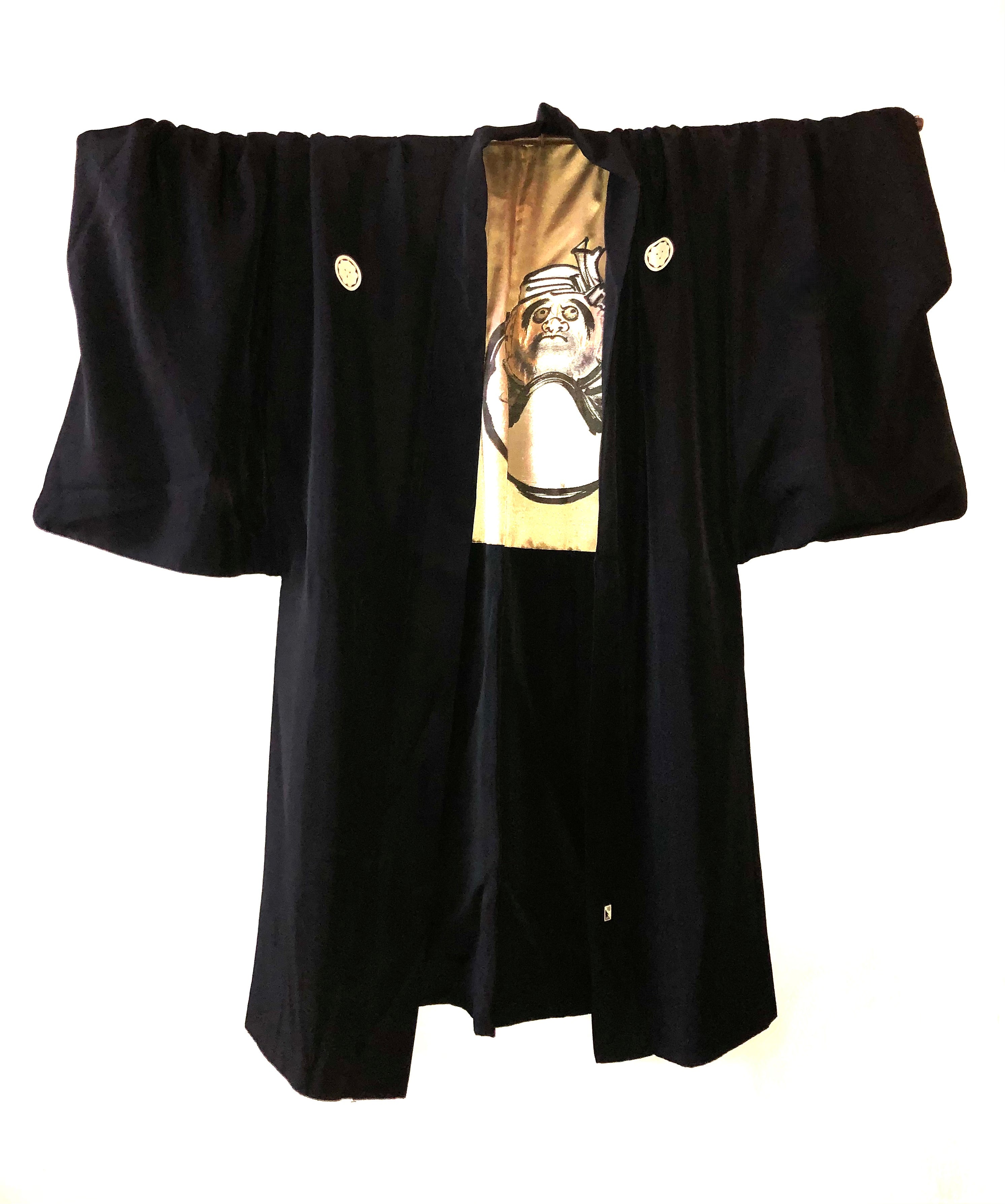
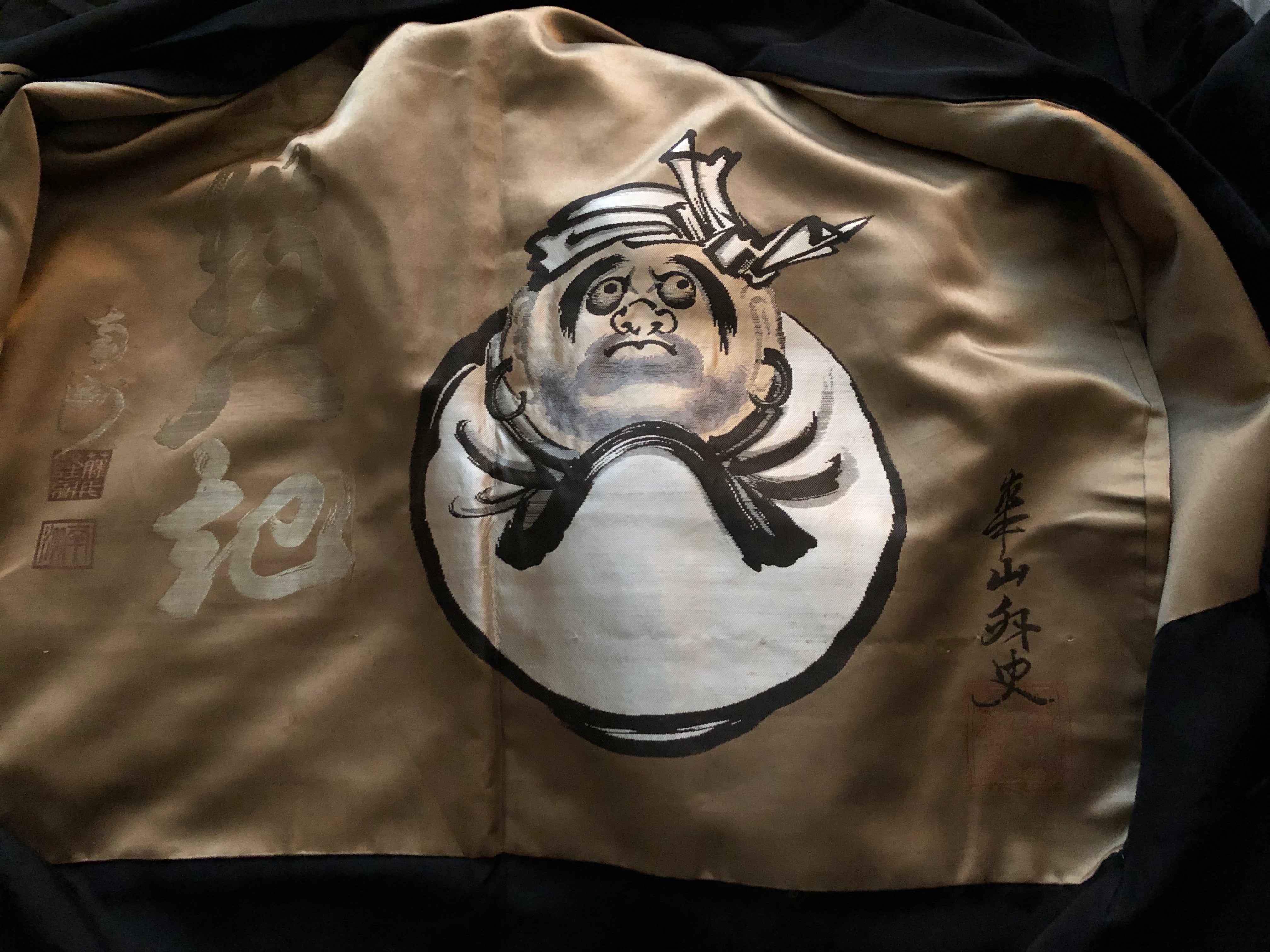
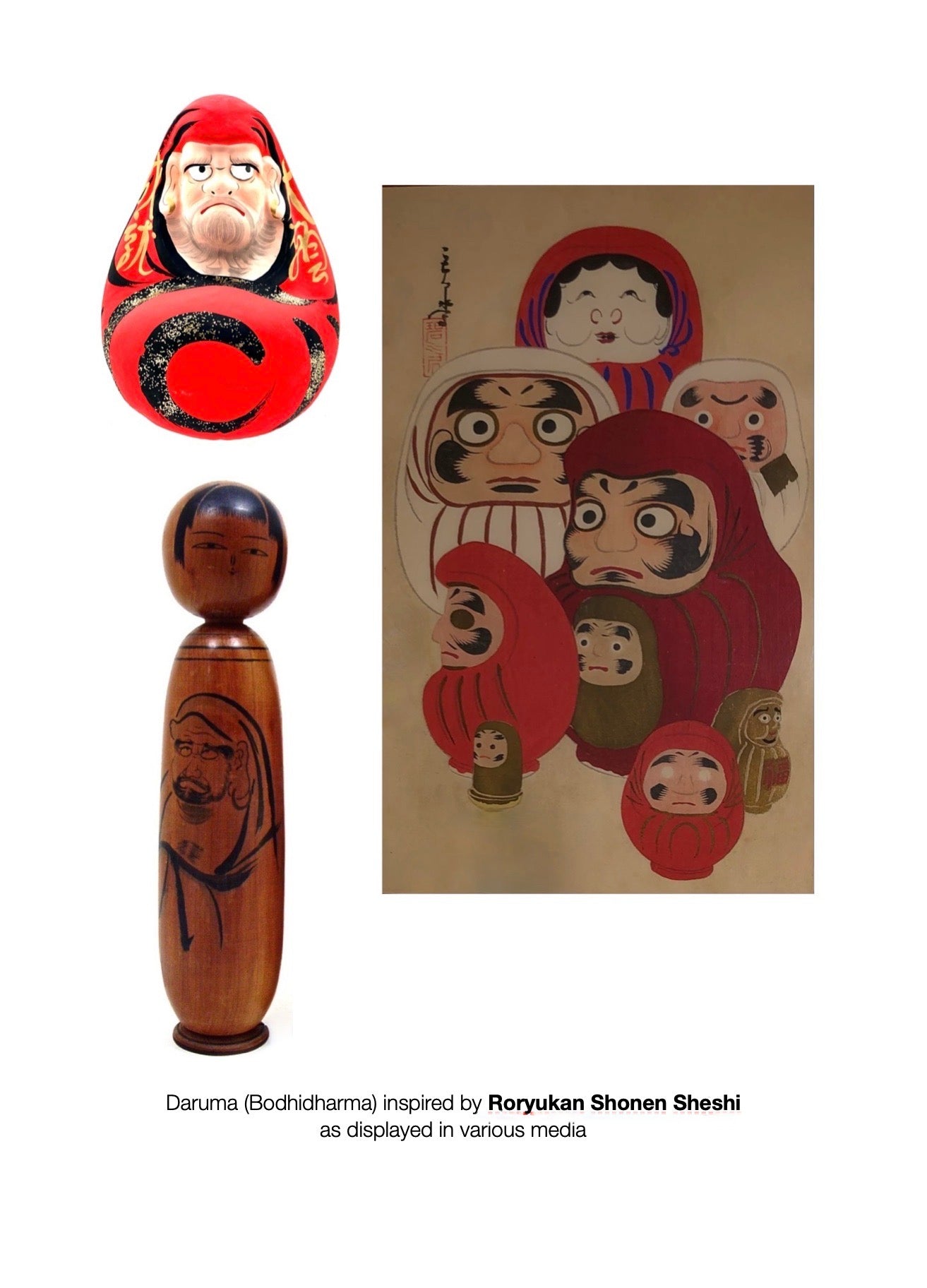
Antique Japanese Black Silk Haori with Khaki Habotai Silk Daruma Lining
Dimensions: 50.0”w x 38-0”l
This is a Japanese Haori (jacket) for men made of silk and is reversible and was common in the 1920s (Taisho era). What makes this piece unique and unusual is that on the reverse lining of the jacket, there is the image of a monk named Daruma, (Bodhidharma) a symbol of intention and perseverance. The story goes that when the person is out in public, the image on the jacket is inside, and when he wants to reveal his real nature, (メッキが剥げる) the “gilding” comes off as he reverses the jacket showing his beliefs and character to others. The arm panels are fully attached to the body of the jacket as opposed to the Kimono that are allowed to flow separately from the garment. This textile has three crests of arms called “Kamon” representing the family and dyed white and referred to as 'Maruni katabami’. This style is held together by a braided inner belt called a hime, which is either tied or hooked (not included).
The graphic design is made of a Khaki Habotai Silk, (also known as “China Silk”) fabric that is light, and delicate with a smooth finish and flowing drape. This type of haori was once worn by samurai warriors, Sama (様, さま), men of rank over the ceremonial kimono as a separate clothing element for evening wear when friends and special guests were entertained.
Additional Information: Most of these Daruma,(Bodhidharma), characters found on antique wood, ceramics, works on paper and vintage clothing were inspired by Roryukan Shonen Sheshi (1849-1918). The writings associated with the graphic on this piece have a loose interpretation of the Zen proverb, “nana korobi ya oki” which means “fall seven times, get up eight”, and refers to persevering through numerous setbacks, never giving up until some goal is attained. A goal revered by samurai and men of authority (Sama). See the last image on this listing.
Vintage Condition: Excellent showing no wear to the fabric or fading. These antique garments are very rare and not what you typically see listed on the internet.
Return Policy
Our antique/vintage pieces are identified/described and professionally photographed, and considered, “as is”, therefore all sales are final. Read our full refund and return policy.


